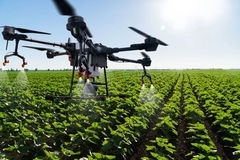
- Industry news
Industry news
- Category news
Category news
- Reports
- Key trends
- Multimedia
- Journal
- Events
- Suppliers
- Home
- Industry news
Industry news
- Category news
Category news
- Reports
- Key trends
- Multimedia
- Events
- Suppliers
Symrise Studies Consumers' Everyday Eating and Drinking Habits

Nearly 90 percent of all newly developed food products vanish from the market within one year. Underestimating the role that situational factors play when buying and consuming food is one of the most important reasons why this occurs.
11/11/08 Symrise is taking consumer research in new directions with the ICE (Inside Consumer Experience) project. The global fragrance and flavorings manufacturer is working within an international consortium to study the eating and drinking habits of consumers in real-life situations. The project was presented to the public for the first time at the 2008 European Conference on Sensory and Consumer Research in Hamburg (September 7 - 10, 2008).

Nearly 90 percent of all newly developed food products vanish from the market within one year. Underestimating the role that situational factors play when buying and consuming food is one of the most important reasons why this occurs. While classic laboratory environments make it possible to control and monitor consumer tests under ideal conditions, they fail to take into account the real situations in which consumers select, eat and drink products. Many consumer decisions and habits play out on a subconscious level, and it is this element in particular that traditional consumer research methods are unable to gauge.
Symrise is working with Noldus Information Technology, Wageningen University and VicarVision in pursuit of a completely new approach to consumer research. The ICE (Inside Consumer Experience) project combines situational and observational research methods as a means of studying eating and drinking habits in everyday settings such as preschools, secondary schools, parties and festivals.
“Before long we’ll be able to analyze the drinking habits of elderly nursing home residents just as we analyze food choices in supermarkets,” says Clemens Tenge, Manager Market & Consumer Research, Flavor & Nutrition. This involves the use of various methods and tools, such as RFID (radio frequency indicator technology) and GPS, to identify where test subjects pause, what routes they follow and what directions they look; new tools such as “FaceReader” can identify whether individuals are happy, sad or angry. Researchers then combine these tools in ways tailored to the research objectives at hand, and can collect and analyze all data on site in a mobile laboratory.
The ICE project builds upon the findings that the project consortium has been obtaining since early this year at the “Restaurant of the Future,” an experimental cafeteria at Wageningen University where patrons’ eating and drinking habits are studied in a real-world setting.
“Combining such a wide range of research methods the way we do with the ICE project is very new within Food & Life Sciences,” Clemens Tenge explains. “The Restaurant of the Future was already a departure from the classic experimental testing environment – now we’re taking that one step further and observing people in real-life consumer situations. Even though we can’t influence and control these situations as rigorously as we could a traditional setting, that loss is offset by the valuable insights we gain into unconscious decision-making processes.”
Within the ICE research consortium Symrise is already working closely with companies in the food industry in order to tailor the new research methodology as much as possible to customer needs.











